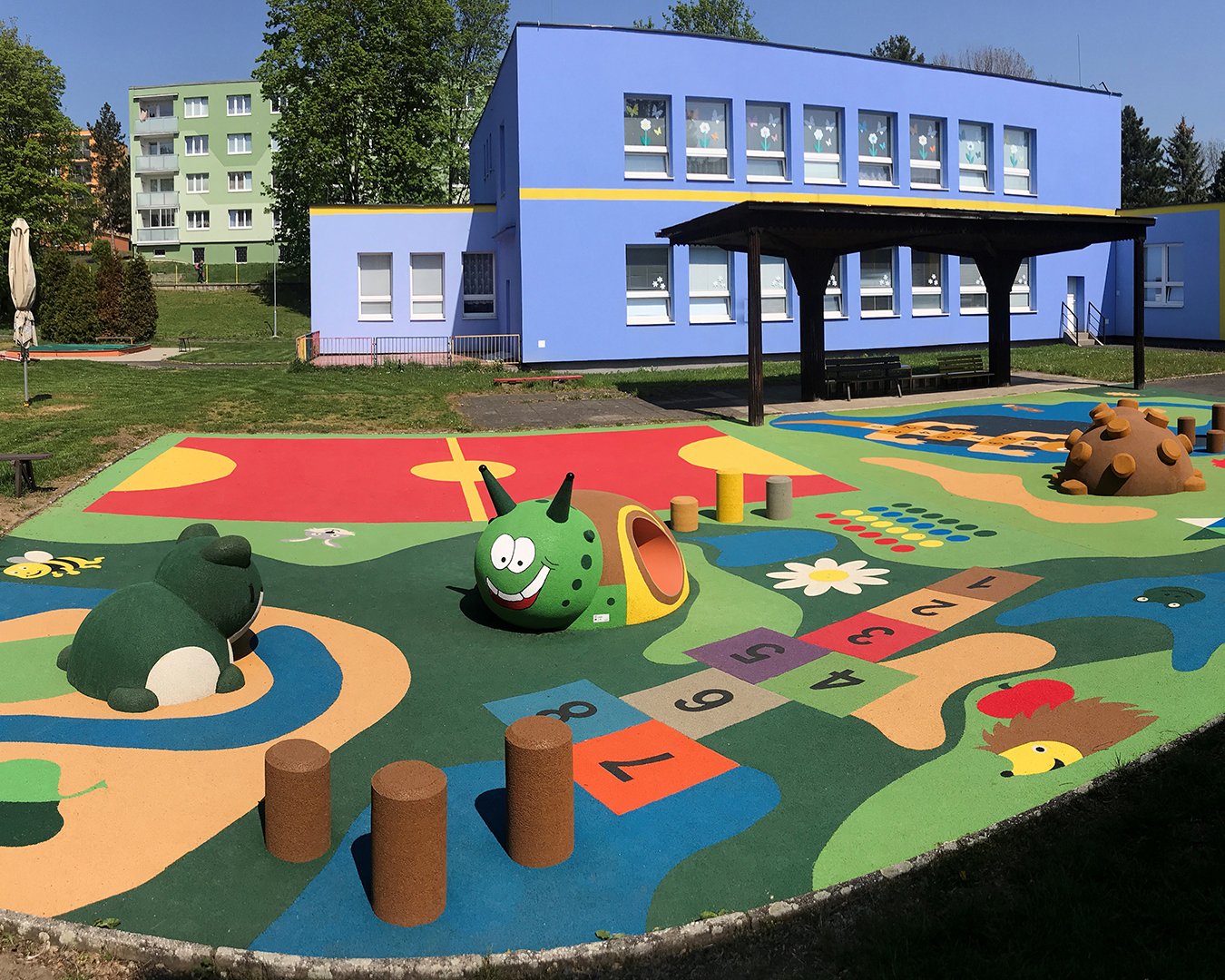Playgrounds are essential for children to play, have fun, and develop physically and mentally. However, children’s safety is a critical aspect that must be considered when designing and building these playgrounds, and this goes beyond the equipment, as safety must be considered in every element and space that makes up the playground, including the floor.
One of the safest and most popular materials for playground flooring is rubber surfacing, which provides a soft and safe surface for children and can also be customized to add a touch of fun and creativity to playgrounds.
Advantages of rubber surfacing
Rubber surfacing is a popular choice for playgrounds for several reasons. First, it is very safe for children, as it is soft and has no sharp edges or edges that can cause injury. In addition, rubber is a flexible material that can absorb shocks and impacts very effectively, so children can jump, run, and play without fear of injury.
Another advantage of rubber surfacing is that it is very durable and resistant to wear and tear. Playgrounds can be used all year round, and rubber surfacing can withstand constant use without losing its soft and safe texture. In addition, rubber is resistant to extreme weather, which means it can be used on outdoor and indoor playgrounds without worrying about material degradation.
Customization and design
Rubber surfaces can be customized and designed according to users’ needs and preferences. Playground designers can create unique and colorful designs tailored to give unique features to the dream and achieve superior integration with the environment. For example, designs can be created with shapes and colors resembling nature, such as trees, flowers, and animals, stimulating children’s imagination and creativity.
In addition, the rubber surface can be designed to include integrated play elements, which can add a touch of fun and adventure to playgrounds, as well as geometric shapes, letters, or numbers if educational elements are desired. Designers can also incorporate accessibility elements, such as ramps so that children with disabilities can enjoy the playground in a safe and accessible way without worrying about unevenness or problems getting around, as these elements can be incorporated and covered without inconvenience. The walkways can also be customized to indicate the direction of travel or to delimit the play areas.

Installation and maintenance
Rubber surfacing depends on the surfacing to be installed since rubber tiles have a more straightforward and faster process than PIP since, in this case, the material must be poured on-site and is a little more complex. In both cases, it is a procedure that professionals must carry out to guarantee the quality of the finish.
The maintenance of rubber surfacing is easy and requires no effort. The surface can be cleaned with soap and water, and unique rubber cleaning products can be used if necessary. In addition, the rubber surface can be easily repaired if damage occurs, making it a convenient choice for playgrounds.
More than a coating
Rubber surfacing has become an essential safety feature for playgrounds due to its versatility, ease of maintenance, and the safety it offers users. Whether in PIP or rubber tiles, the variety of colors and designs that can be created make infinite combinations that allow the customization of any space, so it is not only a generic safety element, but it becomes an additional play system to incorporate into any playground.
What did you think of this topic? Do you want to know more about rubber surfaces?
If you want a rubber surface for your project, playground, community, daycare, school, or public park, contact us by visiting the following link.
